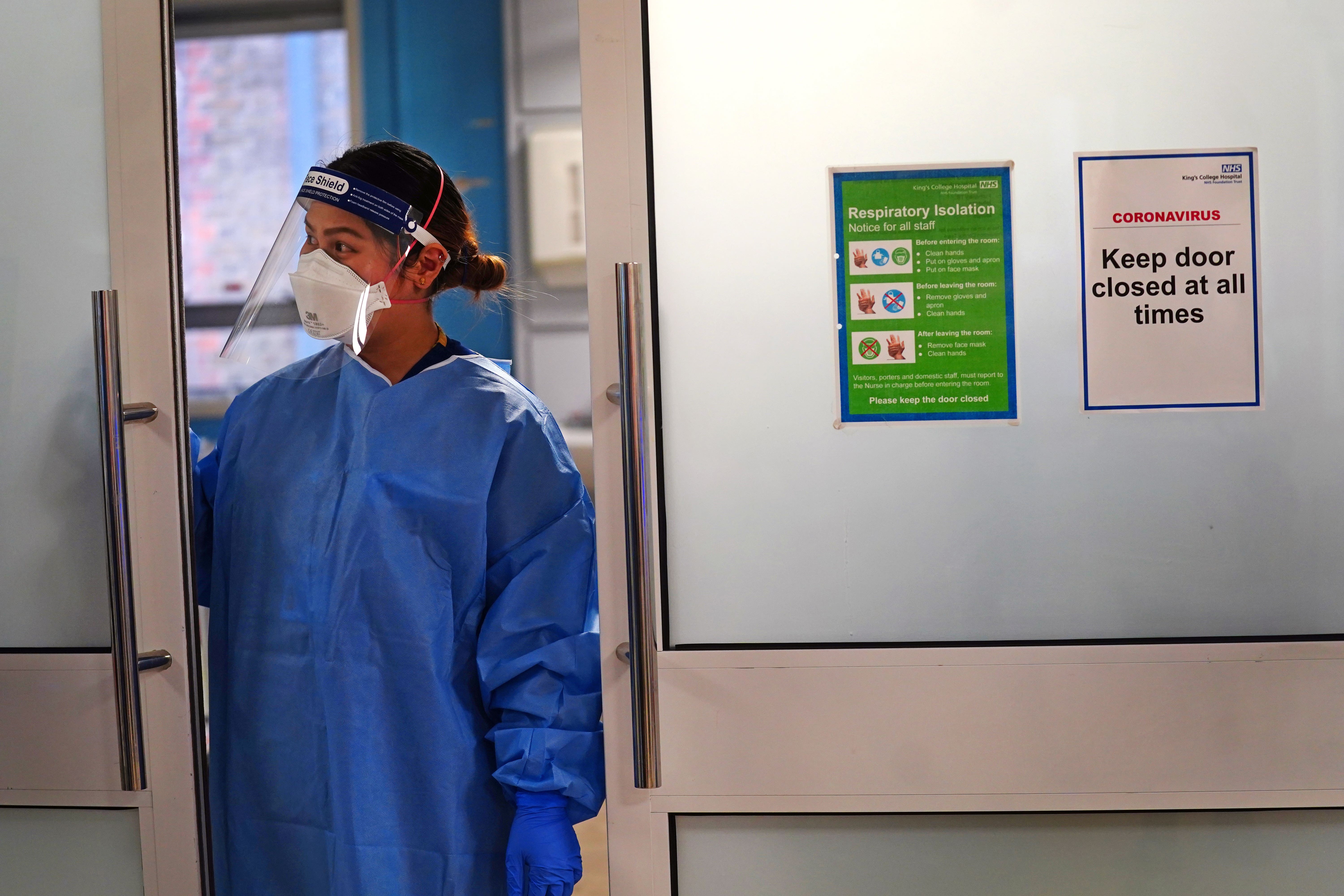Fall in Covid-19 patients in England looks to have stopped
Admission rates are also showing signs of an increase.

Your support helps us to tell the story
From reproductive rights to climate change to Big Tech, The Independent is on the ground when the story is developing. Whether it's investigating the financials of Elon Musk's pro-Trump PAC or producing our latest documentary, 'The A Word', which shines a light on the American women fighting for reproductive rights, we know how important it is to parse out the facts from the messaging.
At such a critical moment in US history, we need reporters on the ground. Your donation allows us to keep sending journalists to speak to both sides of the story.
The Independent is trusted by Americans across the entire political spectrum. And unlike many other quality news outlets, we choose not to lock Americans out of our reporting and analysis with paywalls. We believe quality journalism should be available to everyone, paid for by those who can afford it.
Your support makes all the difference.The recent fall in the number of Covid-19 patients in England looks to have come to a halt, with early signs that levels are starting to rise once more.
A total of 4,964 people testing positive for coronavirus were in hospital as of November 30, up 8% on the previous week, NHS England figures show.
Patient numbers had been on a downwards trend for just over a month after peaking at 10,688 on October 17.
But this decline appears to have levelled off, with figures for the last few days showing a small increase.
Covid-19 hospital data is published every Thursday, so it can take time for a clear trend to emerge.
Earlier this year patient levels topped 14,000 at the peak of the wave of infections caused by the Omicron BA.4 and BA.5 variants of the virus.
This was well below the levels seen during the early waves of the pandemic.
Hospital admission rates are also showing signs of a rise, with 4.7 admissions per 100,000 people in the week to November 27, up slightly from 4.5 per 100,000 the previous week.
Rates are highest among people aged 85 and over, at 50.2 per 100,000.
Dr Mary Ramsay, director of public health programmes at the UK Health Security Agency (UKHSA), said: “As we head into the coldest part of the year, we would expect to see the prevalence of Covid and other winter viruses begin to increase as people mix more indoors. This is what the data is beginning to show.
“Covid hospitalisations are highest in the oldest age groups, so it is particularly important that everyone who is eligible comes forward to receive their booster jab.
“While Covid-19 and flu can be mild infections for many, we must not forget that they can cause severe illness or even death for those most vulnerable in our communities.
“If you are unwell this winter, please try to stay at home and avoid contact with vulnerable people – this will help stop infections spreading.”
Around two-thirds of patients in hospital who test positive for Covid-19 are being treated primarily for something else, although they need to be isolated from patients who do not have the virus, putting extra demands on staff already struggling to clear a record backlog of treatment.
A relatively new variant of coronavirus, Omicron BQ.1, is now the dominant strain in England while a further variant, Omicron BA.2.75, is increasing in prevalence, the UKHSA said.
The latest available estimates for Covid-19 infections show 809,200 people in private households in England were likely to have the virus in the week to November 15, the lowest number since early September.
New estimates will be published on Friday by the Office for National Statistics but these are likely to be for mid-to-late November and therefore will not show any recent changes in the prevalence of the virus.
Meanwhile around one in five people aged 75 and over has yet to have a booster dose of Covid-19 vaccine.
The UKHSA data, which covers vaccinations up to November 27, shows an estimated 80.8% of people aged 80 and over have received a booster, along with 81.1% of 75-79 year-olds and 78.3% of 70-74 year-olds.
All people aged 50 and over are able to book an appointment for an autumn booster dose of Covid-19 vaccine, providing they had their last jab at least three months ago.
Doses are also available to frontline health and care workers, pregnant women and people with weakened immune systems.
Take-up is estimated to be lower among younger age groups, at 71.1% for 65-69 year-olds, 58.8% for 60-64 year-olds, 48.8% for 55 to 59-year-olds and just 38.7% for 50 to 54-year-olds.